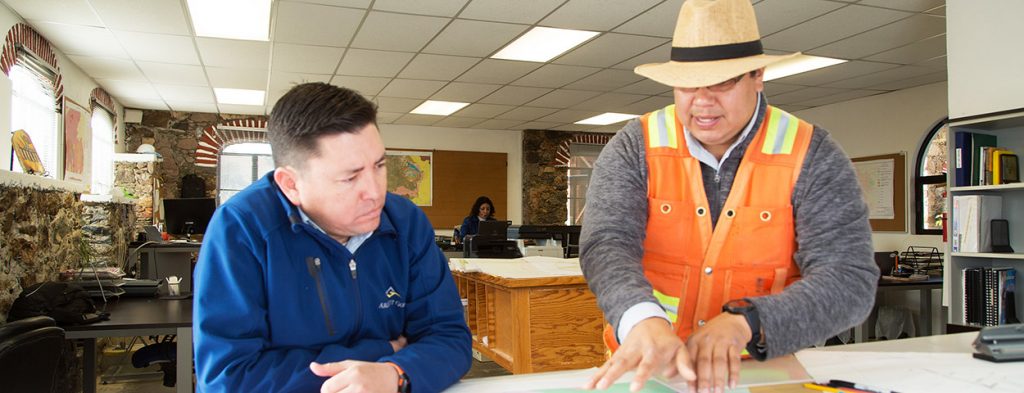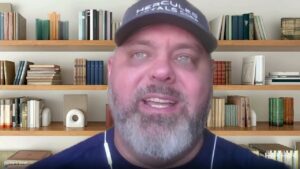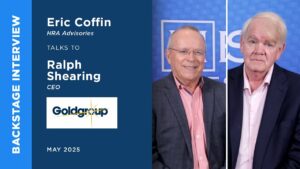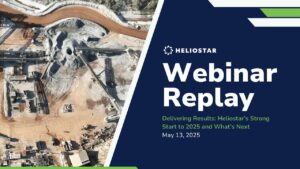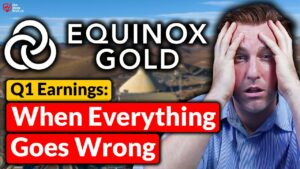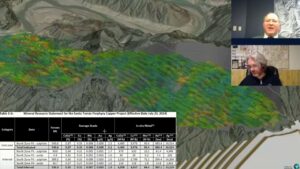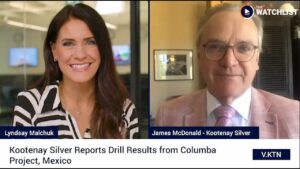15.5 Year Mine Life to Average Approximately 80k Gold Equivalent Ounces1 of Production Per Annum
TORONTO, Dec. 18, 2019 /CNW/ – Argonaut Gold Inc.(TSX: AR) (the “Company”, “Argonaut Gold” or “Argonaut”) is pleased to announce the results of a pre-feasibility study (“PFS”) for its 100% owned Cerro del Gallo project (“CDG” or the “Project”) located 30 kilometres east of Guanajuato City, Guanajuato, Mexico. The National Instrument 43-101 Technical Report will be filed and available within 45 days on www.sedar.com and the Company’s website at www.argonautgold.com. All dollar amounts are expressed in United States dollars, unless otherwise specified.
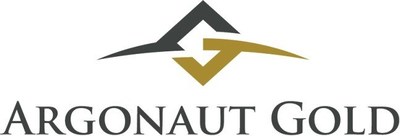
Key highlights from the PFS include:
- An after-tax internal rate of return (“IRR”) of 20.0% and a net present value at a 5% discount rate (“NPV5%”) of $175 million assuming $1,350 gold and $16.75 silver.
- CDG increases Argonaut’s gold Mineral Reserves by 48% and Measured and Indicated gold Mineral Resources by 36%.
- CDG is a heap leach project in Mexico, which complements Argonaut’s existing and proven skillsets, having successfully developed, constructed and operated precious metals mines in Mexico for the past decade.
- CDG is a low-cost asset, with estimated cash costs of $597 per gold ounce sold and all-in sustaining costs (“AISC”) of $677 per gold ounce sold, respectively (see Non-IFRS Measures section).
Pete Dougherty, President & CEO stated: “CDG increases Argonaut’s Proven and Probable gold Mineral Reserves by 48% and, through the work detailed in the PFS, provides Argonaut with a low operating cost, heap leach project with an after-tax NPV5% of $175 million at $1,350 gold and $16.75 silver and $222 million at $1,450 gold and $18.00 silver. We believe this PFS demonstrates that CDG is a long-life, low-cost asset in an attractive mining jurisdiction, Guanajuato, Mexico. CDG fits well within our team’s abilities as another open pit heap leach project in Mexico and is an asset that supports our transformation strategy from being a high-cost producer to a lower-cost producer.”
| ___________________ | |
| 1 | Gold equivalent ounces (“GEOs”) are based on a conversation ratio of 80:1 for silver to gold. Copper was not included in the GEO calculation. |
The PFS assumed $1,350/oz gold, $16.75/oz silver and $6,000/t copper. The PFS yields average annual production of approximately 64,000 gold ounces, 1.3 million silver ounces and 2,400 tonnes of copper or 1,237,000 GEOs over a 15.5-year mine life. Estimated cash costs and all-in sustaining costs (“AISC”) are $597 per gold ounce sold and $677 per gold ounces sold respectively (see Non-IFRS Measures section). The economic summary is presented in Table 1:
Table 1: Economic Analysis Summary
| Production Data | ||
| Life of Mine (LOM) | 15.5 | Years |
| Mine Throughput per day | 16,667 | Tonnes/day |
| Mine Throughput per year | 6,000,000 | Tonnes/year |
| Total Tonnes to Crusher | 91,754,000 | Tonnes |
| Grade Au (Avg.) | 0.56 | g/t |
| Grade Ag (Avg.) | 13.25 | g/t |
| Grade Cu (Avg.) | 0.09 | % |
| Contained Au, oz | 1,638,000 | Ounces |
| Contained Ag, oz | 39,099,000 | Ounces |
| Contained Cu, tonnes | 85,782 | tonnes |
| Metallurgical Recovery Au (Overall) | 60% | |
| Metallurgical Recovery Ag (Overall) | 52% | |
| Metallurgical Recovery Cu (Overall) | 43% | |
| Average Annual Gold Production | 64,000 | Ounces |
| Average Annual Silver Production | 1,301,000 | Ounces |
| Average Annual Copper Production | 2,400 | tonnes |
| Total Gold Produced | 987,000 | Ounces |
| Total Silver Produced | 20,146,000 | Ounces |
| Total Copper Produced | 37,000 | tonnes |
| LOM Strip Ratio (W:O) | 0.63 | |
| Operating Costs (Average LOM) | ||
| Mining | $1.72 | /Tonne mined |
| Mining | $2.81 | /Tonne processed |
| Processing & Support | $6.99 | /Tonne processed |
| G&A | $0.71 | /Tonne processed |
| Total Operating Cost | $10.51 | /Tonne processed |
| Total By-Product Cash Cost | $597 | /Ounce Au |
| AISC | $677 | /Ounce Au |
| Capital Costs (Excluding IVA ) | ||
| Initial Capital | $134 | million |
| LOM Sustaining Capital | $39 | million |
| Total LOM Capital | $173 | million |
| Working Capital & Initial Fills | $11 | million |
| Closure Costs | $37 | million |
| Construction Time | 18 | months |
| Financial Analysis | ||
| Gold Price Assumption | $1,350 | /Ounce |
| Silver Price Assumption | $16.75 | /Ounce |
| Average Annual Cashflow (Pre-Tax) | $49 | million |
| Average Annual Cashflow (After-Tax) | $39 | million |
| Pre-Tax IRR | 25.8% | |
| After-Tax IRR | 20.0% | |
| Pre-Tax NPV5% | $290 | million |
| After-Tax NPV5% | $175 | million |
| Pay-Back Period (Years based on After-Tax) | 4.5 | Years |
The Company has evaluated the NPV5% of the Project at various sensitivities, including gold and silver prices. Table 2 illustrates the PFS after-tax NPV5% sensitivity to various gold and silver price assumptions:
Table 2: After-Tax Sensitivity IRR and NPV Analysis
| Gold and Silver Price Variations | IRR | NPV5% | |
| Au $/oz | Ag $/oz | ||
| $1,150 | $14.25 | 12.7% | $81M |
| $1,250 | $15.50 | 16.5% | $128M |
| $1,350 | $16.75 | 20.0% | $175M |
| $1,450 | $18.00 | 23.2% | $222M |
| $1,550 | $19.25 | 26.3% | $269M |
Mineral Resource Estimate
A conceptual pit was generated in order to constrain the tabulation of Mineral Resources. A gold price of $1,600 was used along with other cost, recovery and slope parameters for the conceptual pit. Mineral Resources were estimated in the conceptual pit using a 0.25 g/t GEO cut-off grade for oxide material types and 0.30 g/t GEO cut-off grade for sulphide material types. Table 3 summarizes the undiluted Measured and Indicated Mineral Resources and Inferred Mineral Resources.
Table 3: Mineral Resource Estimate
| Resource Category | Tonnes (millions) | Au (g/t) | Ag (g/t) | Cu % | Au ozs (000’s) | Ag ozs (000’s) | Cu t (000’s) |
| Measured | 121.6 | 0.49 | 13.1 | 0.10 | 1,899 | 51,086 | 121 |
| Indicated | 80.4 | 0.37 | 10.8 | 0.08 | 965 | 28,017 | 66 |
| Measured & Indicated | 201.9 | 0.44 | 12.2 | 0.09 | 2,864 | 79,103 | 187 |
| Inferred | 5.1 | 0.43 | 11.9 | 0.09 | 71 | 1,947 | 5 |
| Note: | Mineral Resources that are not Mineral Reserves do not have demonstrated economic viability. It is reasonably expected that the majority of the Inferred Mineral Resources could be upgraded to Indicated Mineral Resources with continued exploration. The Mineral Resources tabulated in Table 3 are inclusive of Mineral Reserves. |
| Numbers may not total due to rounding. |
Mineral Reserve Estimate
The Mineral Reserve estimate for the CDG open pit was constrained with estimates of gold price, silver price, process recovery, operating costs, pit slope angles and refining/transport costs.
The Mineral Resource block model for the CDG deposit was then used to determine optimal mining shells and pit phasing. Measured and Indicated Mineral Resources were included in the pit optimization process. Inferred Mineral Resources were treated as waste.
Detailed pit and phase designs were created based on the pit optimization results. These designs incorporated geotechnical parameters as well as ramp accesses and formed the basis of the Mineral Reserve estimate.
GEO cut-off grades of between 0.30 g/t and 0.31 g/t for oxide materials and 0.34 g/t and 0.39 g/t for sulphide materials were used to calculate the Mineral Reserve estimate for CDG. Cut-off grades are based on $1,200 gold and $14.50 silver. The PFS Mineral Reserve estimate is summarized in the Table 4:
Table 4: Mineral Reserve Estimate
| Reserve Class | Tonnes (millions) | Au (g/t) | Ag (g/t) | Cu % | Au ozs (000’s) | Ag ozs (000’s) | Cu t (000’s) |
| Proven | 70.4 | 0.59 | 13.7 | 0.10 | 1,326 | 31,088 | 67,691 |
| Probable | 21.3 | 0.46 | 11.7 | 0.08 | 313 | 8,012 | 17,821 |
| Proven & Probable | 91.8 | 0.56 | 13.3 | 0.09 | 1,638 | 39,099 | 85,782 |
| Notes: | Mineral Reserves are based on the mine production schedule. |
| Numbers may not total due to rounding. |
Mineral Processing, Metallurgical Testing and Recovery Methods
Metallurgical testing in 2018 and 2019 was completed at Kappes Cassiday & Associates (“KCA”). KCA’s laboratory conducted test work on four main categories of ore types: Oxide, Mixed Oxide, Mixed Sulphide and Sulphide. The metallurgical test work included head analyses (assay and multi-element), agglomeration, percolation, compacted permeability, bottle roll and column leach on conventionally and high-pressure grinding roll (“HPGR”) crushed material. Comminution test work was performed by an external laboratory, Hazen Research Incorporated.
Test work results have indicated that the CDG ore is amenable to heap leaching for the recovery of gold, silver and copper.
CDG ore is estimated to contain an average of 0.09% copper based on the mine plan used for the PFS. A portion of this copper is cyanide soluble and is expected to be extracted in the heap leach circuit. The cyanide soluble copper increases the cyanide consumption. A SART (sulfidation, acidification, recycle, thickening) plant that releases cyanide associated with the copper cyanide complex, allowing it to be recycled back to the leach process as free cyanide, is included. The resulting copper and silver precipitate will be sold, bringing additional revenue to the project.
The ore will be mined by truck and shovel open-pit mining, fine crushed using a system incorporating cone and HPGR crushers, agglomerated with cement and conveyor stacked on the heap leach pad.
Ore will be leached with a dilute cyanide solution at a high solution application rate for the first 40 days and a lower application rate for the remaining 80 days for a total leach cycle of 120 days. The gold, silver, and copper bearing solution will be collected in the pregnant solution pond and pumped to the SART plant. Pregnant solution will be acidified with sulfuric acid, then copper and silver will be precipitated as sulphides by the addition of sodium hydrosulphide. The precipitate will be thickened and filtered to produce a copper-silver filter cake for shipment to a smelter. The copper stripped barren solution from the SART plant will then be processed in a carbon ADR plant to recover gold. The gold will be periodically stripped from the carbon using a desorption process. The gold will be plated on stainless steel cathodes, removed by washing, filtered, dried and then smelted to produce a doré bar.
Engineering and design of the processing plant was undertaken by KCA for complete crushing, leaching, and recovery systems.
The projected field gold, silver and copper recoveries are summarized in Table 5.
Table 5: Recoveries by Material Type
| Ore Type (HPGR) | Feed Distribution LOM Average | Projected Field Recoveries | ||
| Au, % | Ag, % | Cu% | ||
| Weathered (Oxide) | 9.2% | 74 | 60 | 22 |
| Mixed Oxide | 5.8% | 70 | 79 | 46 |
| Mixed Sulphide | 38.0% | 59 | 59 | 59 |
| Fresh (Sulphide) | 47.0% | 58 | 40 | 34 |
| Life of Mine (LOM) Average | 60 | 52 | 43 |
Mine Plan and Production Schedule
CDG has been planned as an open-pit, truck and shovel operation. The truck and shovel method provides reasonable cost benefits and selectivity for this type of deposit.
While it is assumed that the CDG property will be mined using a mining contractor, it has been planned as an open-pit mine using 91-tonne haul trucks and 13 cubic meter front-end loading equipment. Final equipment selection will be determined by the contractor and may differ from the equipment specified in the PFS; however, it is assumed that the size and amount of equipment will be similar.
Table 6 illustrates the proposed CDG mining plan.
Table 6: Proposed Mining Plan
| Description | Unit | Value |
| Mine Production Life (incl. pre-prod) | yr | 15.5 |
| Process Diluted Ore Feed | Mt | 91.8 |
| Diluted Gold Grade (head grade) | g/t | 0.56 |
| Contained Gold | koz | 1,638 |
| Diluted Silver Grade (head grade) | g/t | 13.3 |
| Contained Silver | koz | 39,099 |
| Diluted Copper Grade (head grade) | % | 0.09 |
| Contained Copper | kt | 85,782 |
| Waste | Mt | 57.8 |
| Total material | Mt | 149.5 |
| Strip Ratio (W:O) | t:t | 0.63 |
Mining will begin in the year preceding full operations and continue for 15.5 years. Ore will be sent from the pit directly to the crusher prior to heap leaching. A small stockpile may be maintained near the crusher so that trucks may dump and return to mining operations in the event of unexpected crusher down time. Table 7 summarizes the life of mine material movement by year for both the mine and the processing facility:
Table 7: Mine Production Schedule
| Year | Ore Tonnes Mined (K tonnes) | Waste Tonnes Mined (K tonnes) | Total Tonnes Mined(K tonnes) | Strip Ratio | Au Grade (g/t) | Au Recovered (000s oz) | Ag Grade (g/t) | Ag Recovered (000s oz) | Cu Grade (%) | Cu Recovered (tonnes) |
| Pre-Production | 386 | 1,907 | 2,292 | 4.95 | 0.17 | N/A | 22.2 | N/A | 0.16 | N/A |
| 1 | 4,363 | 612 | 4,974 | 0.14 | 0.48 | 44 | 14.2 | 1,226 | 0.06 | 1,100 |
| 2 | 5,960 | 978 | 6,938 | 0.16 | 0.56 | 68 | 13.7 | 1,509 | 0.08 | 2,114 |
| 3 | 5,980 | 2,114 | 8,094 | 0.35 | 0.58 | 61 | 13.7 | 1,321 | 0.09 | 2,196 |
| 4 | 6,012 | 2,508 | 8,520 | 0.42 | 0.56 | 66 | 14.0 | 1,500 | 0.09 | 2,573 |
| 5 | 6,051 | 2,489 | 8,540 | 0.41 | 0.54 | 64 | 14.3 | 1,539 | 0.09 | 2,566 |
| 6 | 5,882 | 2,391 | 8,274 | 0.41 | 0.57 | 66 | 13.2 | 1,418 | 0.09 | 2,477 |
| 7 | 6,104 | 1,197 | 7,302 | 0.20 | 0.64 | 73 | 13.8 | 1,396 | 0.09 | 2,581 |
| 8 | 6,117 | 2,887 | 9,004 | 0.47 | 0.71 | 82 | 13.7 | 1,348 | 0.09 | 2,357 |
| 9 | 5,820 | 5,792 | 11,612 | 1.00 | 0.60 | 71 | 15.8 | 1,546 | 0.11 | 2,765 |
| 10 | 6,347 | 9,660 | 16,008 | 1.52 | 0.53 | 62 | 13.0 | 1,247 | 0.09 | 2,312 |
| 11 | 5,668 | 11,430 | 17,098 | 2.02 | 0.44 | 51 | 12.9 | 1,231 | 0.11 | 2,574 |
| 12 | 6,107 | 7,032 | 13,139 | 1.15 | 0.46 | 52 | 11.1 | 1,043 | 0.10 | 2,500 |
| 13 | 6,016 | 3,764 | 9,781 | 0.63 | 0.54 | 60 | 12.1 | 1,058 | 0.10 | 2,477 |
| 14 | 6,000 | 1,992 | 7,992 | 0.33 | 0.58 | 65 | 12.8 | 1,111 | 0.10 | 2,502 |
| 15 | 6,000 | 882 | 6,882 | 0.15 | 0.55 | 63 | 12.0 | 1,021 | 0.09 | 2,193 |
| 16 | 2,942 | 144 | 3,086 | 0.05 | 0.54 | 41 | 10.0 | 632 | 0.09 | 1,388 |
| Total | 91,754 | 57,780 | 149,534 | 0.63 | 0.56 | 987 | 13.3 | 20,146 | 0.09 | 36,667 |
Capital Costs
The capital cost estimate includes all expenditures for process facilities, infrastructure, construction indirect costs, mine contractor mobilization and owner mining capital costs assuming contract mining for a planned 15.5-year mine life. Major construction at site is expected to take place over an 18-month period. Total life-of-mine capital cost is $184.6 million, including $11.1 million in working capital and first fills, and not including reclamation and closure costs, IVA (value added tax) or other taxes. All IVA is assumed to be fully refundable. Table 8 details the high-level capital cost estimate:
Table 8: Summary of Life of Mine Capital Costs
| Description | Cost ($M) |
| Pre-Production Capital | $ 134.2 |
| Working Capital & Initial Fills | $ 11.1 |
| Sustaining Capital – Mine & Process | $ 39.2 |
| Total excluding IVA | $ 184.6 |
Operating Costs
Mine operating costs have been estimated based on contractor proposal rates. The PFS operating cost estimate includes the costs required to mine, handle and transport ore to the crusher, crush, agglomerate, stack and process the ore to gold doré and silver-copper filter cakes and general and administrative expenses. The life-of-mine unit costs are summarized in Table 9:
Table 9: Life of Mine Unit Cost Estimate
| Description | LOM Cost ($/t Processed) |
| Mine | $ 2.81 |
| Process & Support Services | $ 6.99 |
| Site G & A | $ 0.71 |
| Total | $ 10.51 |
Environmental Studies, Permitting and Social Impact
According to Mexican regulations, a project such as CDG requires the preparation, evaluation and approval of three distinct studies by the General Directorate of Impact and Environmental Risk (DGIRA) of SEMARNAT (Mexico´s environmental authority). These studies are: the environmental impact statement (MIA), the environmental risk assessment (ERA), and the justified technical study for land use change (ETJ).
Depending on the level of risk and scope, these documents may be evaluated separately, or by filing in a unified technical document for land use change (DTU). Argonaut retained the services of Hermosillo-based firm MC Terra to prepare the corresponding DTU for Cerro del Gallo. The CDG DTU was filed at DGIRA on April 26th, 2019. By law, DGIRA can take up to 60 business days for their review and can add another 60 days to the process at their discretion. DGIRA elected to extend the CDG review time by the additional 60 days. Argonaut currently expects a decision in Q1 2020.
Contribution, Work and Qualified Persons
Carl Defilippi, RM SME, of KCA was the overall author of the Report and was responsible for processing and infrastructure and associated costs, environmental issues and the financial analysis. Mr. Defilippi is an independent Qualified Person under NI 43-101. Mr. Defilippi visited the site on 4 September 2019. During the visit, Mr. Defilippi inspected drill core, reviewed locations of process and infrastructure facilities and met with local personnel to discuss the Project.
Mr. Thomas L. Dyer, PE of MDA is responsible for statement of Proven and Probable mineral reserves, mining methods, and mining capital and operating costs. Mr. Dyer is an independent Qualified Person under NI 43-101. Mr. Dyer visited the site in June, 2010. During his visit, Mr. Dyer reviewed core and the proposed mining and dumping sites.
Brian Arkell, VP Exploration for Argonaut Gold, is responsible for geological and exploration information along with validation of the drill hole and assay data. Mr. Arkell, a non-independent Qualified Person, has visited site on numerous occasions in 2018 and 2019, reviewed surface geology, drill core and RC cuttings, sampling and assaying procedures, as well as preparation of the geological and resource models.
Todd Minard, P.E. (Nevada and California), of Golder Associates Inc. is responsible for the design of the heap leach facility (HLF) and waste rock dump (WRD). Mr. Minard, an independent Qualified Person, visited the site in February 2014 and October 2019. While on site Mr. Minard conducted visual examination of the HLF and WRD ground conditions and identified candidate liner bedding sources that will be evaluated in a future geotechnical investigation.
Mr. Neb Zurkic, president of Zurkic Mining Consultants (ZMC), is responsible for the Mineral Resource Estimate. Mr. Zurkic, an independent Qualified Person, conducted a three-day site visit in July 2018 in order to examine drill core, RC drill cuttings, and to examine the onsite geology.
There is no affiliation between Mr. Defilippi, Mr. Dyer, Mr. Minard, Mr. Zurkic and Argonaut, except that of an independent consultant / client relationship. Mr. Arkell is the VP of Exploration for Argonaut.
The effective date of the Mineral Resource is October 24, 2019. The effective date of the Mineral Reserve is December 16, 2019. The effective date of the Technical Report is December 18, 2019.
Non-IFRS Measures
The Company has included certain non-IFRS measures including “Cash cost per gold ounce sold” and “All-in sustaining cost per gold ounce sold” in this press release, which are presented in accordance with International Financial Reporting Standards (“IFRS”). Cash cost per gold ounce sold is equal to production costs less silver sales divided by gold ounces sold. All-in sustaining cost per gold ounce sold is equal to production costs less silver sales plus general and administrative, exploration, accretion and other expenses and sustaining capital expenditures divided by gold ounces sold. The Company believes that these measures provide investors with an improved ability to evaluate the performance of the Company. Non-IFRS measures do not have any standardized meaning prescribed under IFRS. Therefore they may not be comparable to similar measures employed by other companies. The data is intended to provide additional information and should not be considered in isolation or as a substitute for measures of performance prepared in accordance with IFRS. Please see the most recent management’s discussion and analysis for full disclosure on non-IFRS measures.
Cautionary Note Regarding Forward-looking Statements
This press release contains certain “forward-looking statements” and “forward-looking information” under applicable Canadian securities laws concerning the business, operations and financial performance and condition of Argonaut Gold Inc. (“Argonaut” or “Argonaut Gold”). Forward-looking statements and forward-looking information include, but are not limited to mine life of the various mineral projects of Argonaut; the ability to obtain permits for operations; synergies; the realization of mineral reserve estimates; the timing and amount of estimated future production; costs of production; and financial impact of completed acquisitions; the benefits of the development potential of the properties of Argonaut; the future price of gold, copper, and silver; the estimation of mineral reserves and resources; success of exploration activities; the ability to take advantage of forward sales agreements profitably and currency exchange rate fluctuations. Except for statements of historical fact relating to Argonaut, certain information contained herein constitutes forward-looking statements. Forward-looking statements are frequently characterized by words such as “plan,” “expect,” “project,” “intend,” “believe,” “anticipate”, “estimate” and other similar words, or statements that certain events or conditions “may”, “should” or “will” occur. Forward-looking statements are based on the opinions and estimates of management at the date the statements are made, and are based on a number of assumptions and subject to a variety of risks and uncertainties and other factors that could cause actual events or results to differ materially from those projected in the forward-looking statements. Many of these assumptions are based on factors and events that are not within the control of Argonaut and there is no assurance they will prove to be correct.
Factors that could cause actual results to vary materially from results anticipated by such forward-looking statements include access to water to meet planned solution flow rates, estimates of future capital and operating costs, variations in ore grade or recovery rates, variations in ore and waste rock density, changes in market conditions, risks relating to the availability and timeliness of permitting and governmental approvals, risks relating to international operations, fluctuating metal prices and currency exchange rates, changes in project parameters, the possibility of project cost overruns or unanticipated costs and expenses, labour disputes and other risks of the mining industry, failure of plant, equipment or processes to operate as anticipated.
These factors are discussed in greater detail in Argonaut’s most recent Annual Information Form and in the most recent Management’s Discussion and Analysis filed on SEDAR, which also provide additional general assumptions in connection with these statements. Argonaut cautions that the foregoing list of important factors is not exhaustive. Investors and others who base themselves on forward-looking statements should carefully consider the above factors as well as the uncertainties they represent and the risk they entail. Argonaut believes that the expectations reflected in those forward-looking statements are reasonable, but no assurance can be given that these expectations will prove to be correct and such forward-looking statements included in this press release should not be unduly relied upon. These statements speak only as of the date of this press release.
Although Argonaut has attempted to identify important factors that could cause actual actions, events or results to differ materially from those described in forward-looking statements, there may be other factors that cause actions, events or results not to be anticipated, estimated or intended. There can be no assurance that forward-looking statements will prove to be accurate, as actual results and future events could differ materially from those anticipated in such statements. Argonaut undertakes no obligation to update forward-looking statements if circumstances or management’s estimates or opinions should change except as required by applicable securities laws. The reader is cautioned not to place undue reliance on forward-looking statements. Statements concerning mineral reserve and resource estimates may also be deemed to constitute forward-looking statements to the extent they involve estimates of the mineralization that will be encountered if the property is developed. Comparative market information is as of a date prior to the date of this document.
About Argonaut Gold
Argonaut Gold is a Canadian gold company engaged in exploration, mine development and production. Its primary assets are the El Castillo mine and San Agustin mine, which together form the El Castillo Complex in Durango, Mexico and the La Colorada mine in Sonora, Mexico. Advanced exploration projects include the San Antonio project in Baja California Sur, Mexico, the Cerro del Gallo project in Guanajuato, Mexico and the Magino project in Ontario, Canada. The Company also has several exploration stage projects, all of which are located in North America.
SOURCE Argonaut Gold Inc.
